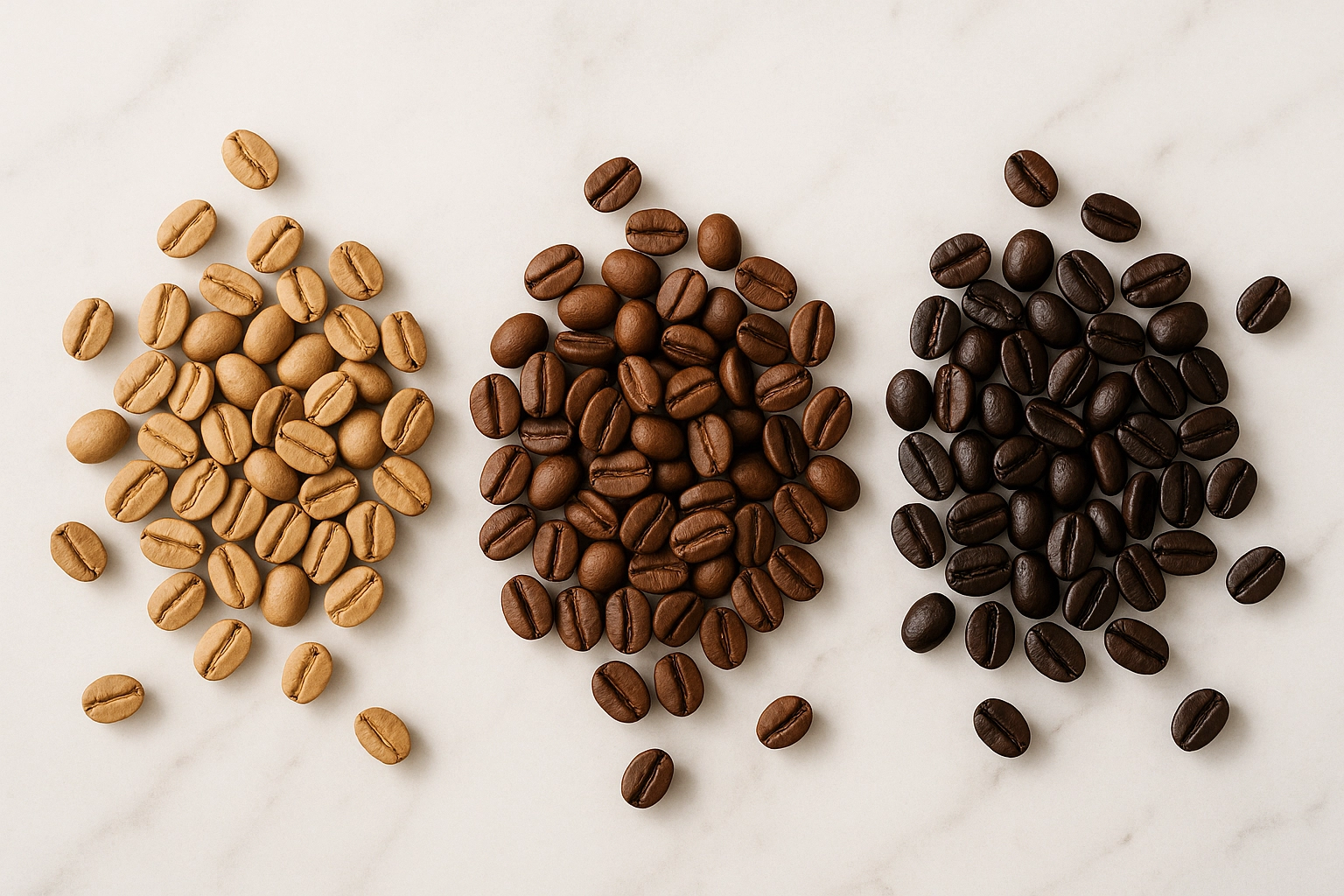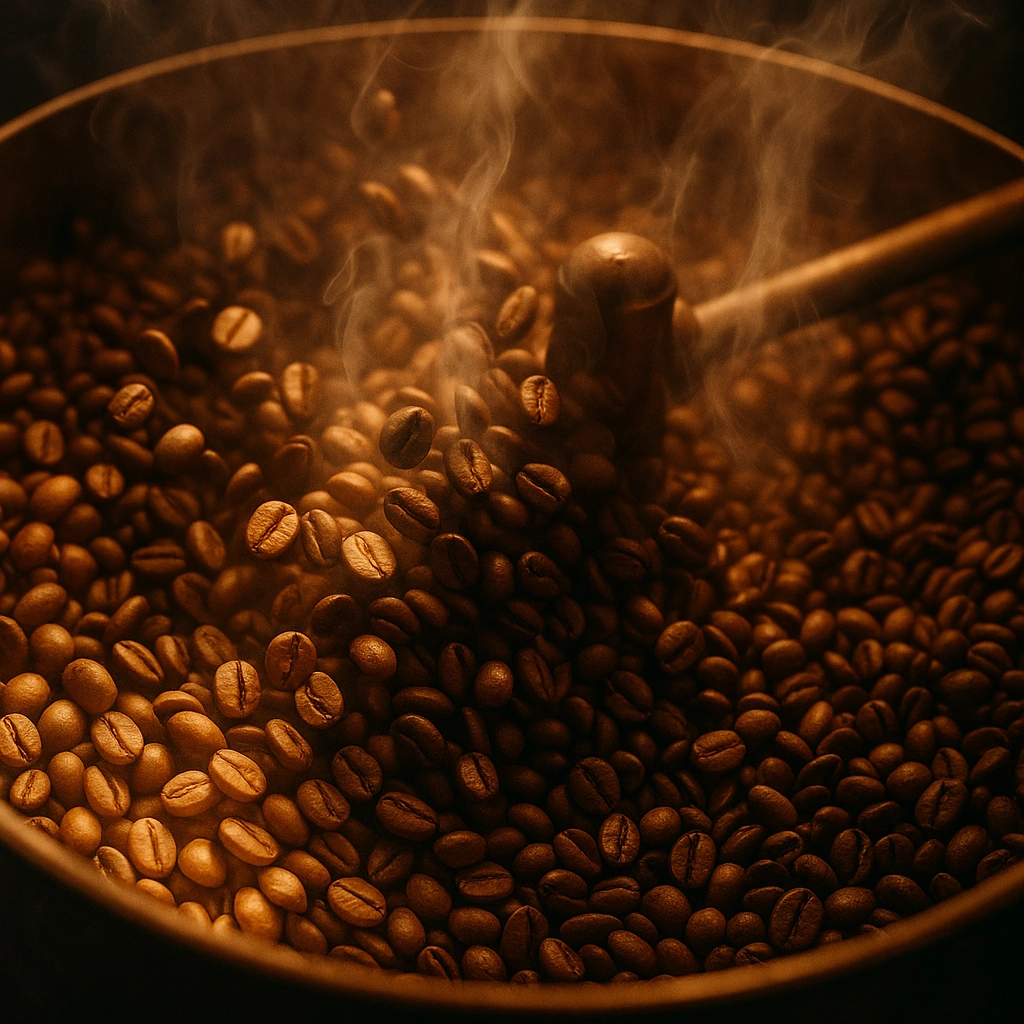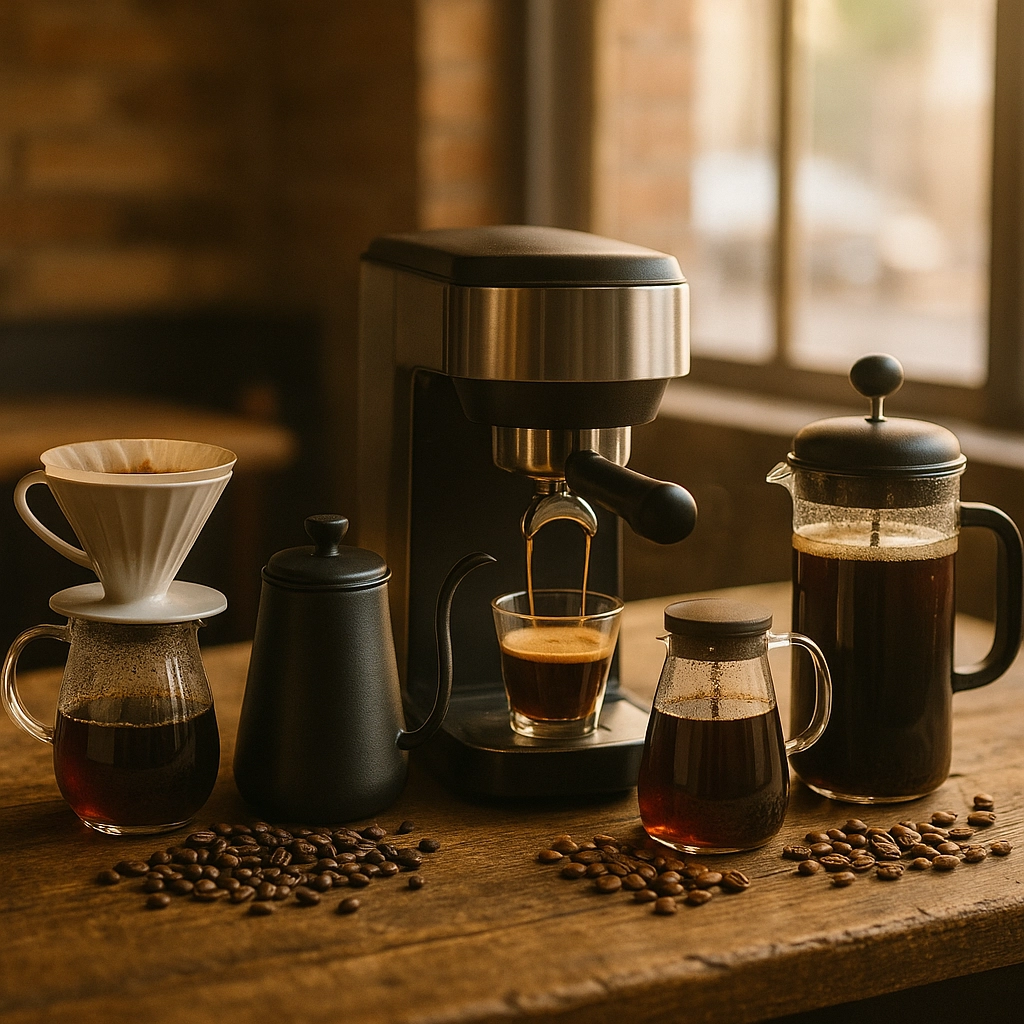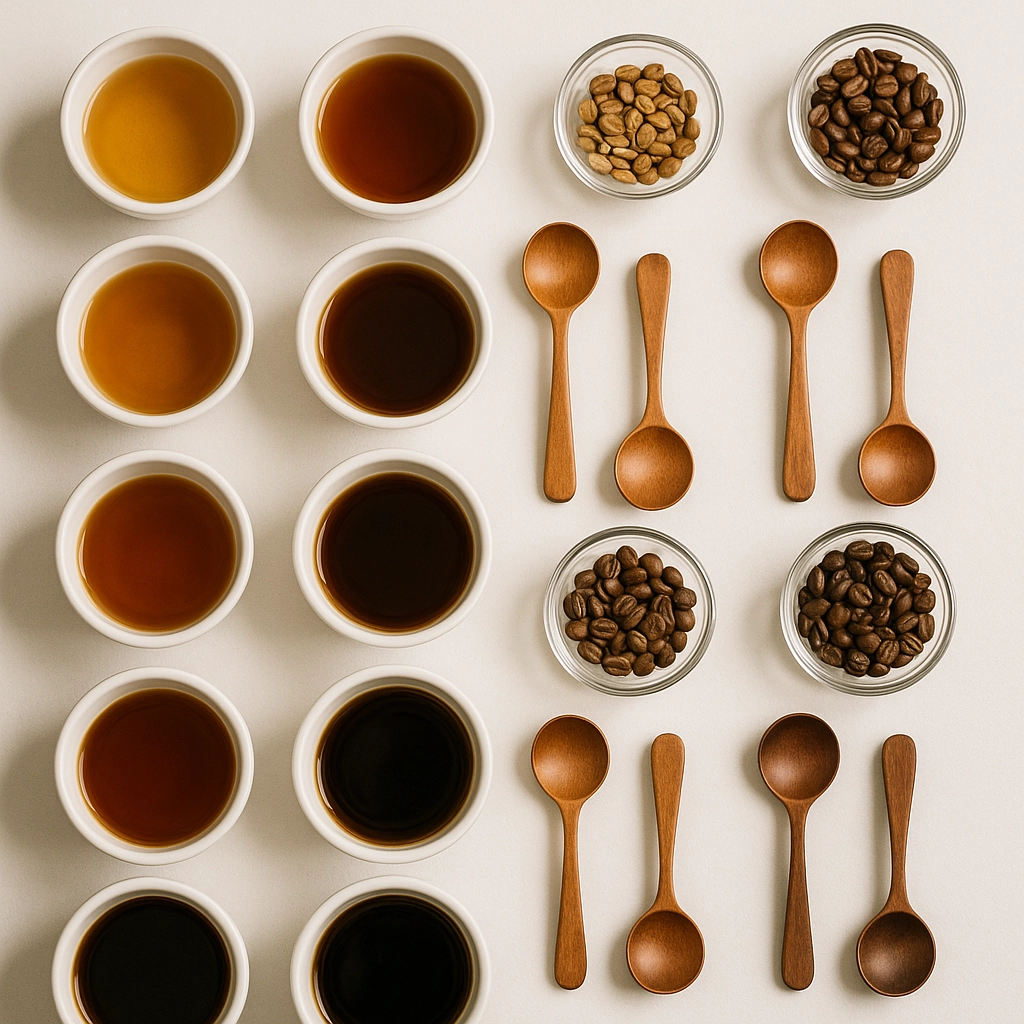Choosing the perfect coffee roast can feel overwhelming when you're standing in front of shelves lined with bags labeled "Light City," "French Roast," and everything in between. But here's the thing: picking your ideal roast doesn't have to be complicated. At Carolina Coffee Works, we've been roasting beans for years, and we've learned that the best roast is simply the one that makes you excited to brew your morning cup.
Let's break down everything you need to know about coffee roasts, from the science behind the process to practical tips for finding your perfect match.
Understanding the Roast Spectrum
Coffee roasting is essentially controlled cooking. We take green coffee beans: which taste nothing like the coffee you know and love: and apply heat to transform them into the aromatic, flavorful beans that make your day better.
Light Roasts: The Bright and Bold
Light roasts are like the coffee world's equivalent of a crisp white wine. These beans are roasted just until they reach what we call "first crack": the moment when you hear a popping sound as moisture escapes and the bean structure breaks down. Light roasts typically hit temperatures between 350°F and 400°F.
What makes light roasts special? They preserve the bean's original characteristics, showcasing the unique flavors that come from the soil, climate, and processing method of their origin. You'll often taste bright acidity, floral notes, and fruity undertones. Think blueberry, citrus, or even wine-like qualities.

Medium Roasts: The Perfect Balance
Medium roasts are the sweet spot for many coffee drinkers. Roasted to temperatures between 400°F and 430°F, these beans strike a balance between origin flavors and roast characteristics. You'll still taste some of the bean's natural properties, but you'll also get those pleasant roasted notes that add warmth and body to your cup.
Medium roasts offer more caramelization than their lighter counterparts, creating flavors like chocolate, nuts, and subtle spices. They're less acidic than light roasts but not as bold as dark roasts: making them incredibly versatile.
Dark Roasts: The Rich and Robust
Dark roasts take the transformation further, reaching temperatures above 430°F and often going through "second crack." At this point, the oils in the beans start to migrate to the surface, giving dark roasted beans their characteristic sheen.
These roasts develop deep, rich flavors dominated by the roasting process itself rather than the bean's origin. You'll taste chocolate, caramel, smoke, and sometimes even burnt sugar notes. The acidity is much lower, and the body is fuller and heavier.
How Roasting Changes Everything
Here's where it gets interesting: roasting doesn't just change flavor; it transforms everything about the coffee bean.
Chemical Changes: During roasting, hundreds of chemical reactions occur. Sugars caramelize, acids break down, and new flavor compounds form. This is why a light roast Ethiopian bean tastes completely different from the same bean roasted dark.
Caffeine Content: Contrary to popular belief, light roasts actually contain slightly more caffeine than dark roasts. The longer roasting process breaks down caffeine, though the difference is minimal: we're talking about a few milligrams per cup.
Solubility: Darker roasted beans are more soluble, meaning they extract faster during brewing. This is why dark roasts can taste over-extracted more quickly than light roasts.

Matching Roasts to Your Brewing Method
Your brewing method plays a huge role in which roast will work best for you.
Pour Over and Drip Coffee: These methods work beautifully with light to medium roasts. The longer contact time allows you to extract the complex flavors without overwhelming bitterness.
Espresso: Traditionally uses medium to dark roasts because the high-pressure extraction method needs beans that can handle the intensity. However, many specialty cafes now use lighter roasts for espresso to highlight origin characteristics.
French Press: Can handle any roast level, but medium to dark roasts often work well because the metal filter allows oils to pass through, complementing the roast's developed flavors.
Cold Brew: Works with any roast, but many people prefer medium to dark roasts for the smooth, chocolatey flavors that pair well with the cold brewing process.
Finding Your Personal Preference
At Carolina Coffee Works, we always tell customers that taste is personal. What tastes perfect to you might be too acidic or too bitter for someone else. Here's how to figure out your preferences:
Start with Your Current Favorites: If you love the coffee from a particular shop or brand, check what roast level they use. This gives you a baseline to work from.
Consider Your Food Preferences: Love citrusy desserts and bright flavors? You might enjoy light roasts. Prefer chocolate and caramel? Medium to dark roasts could be your sweet spot.
Think About When You Drink Coffee: Some people prefer brighter, more energizing light roasts in the morning and richer, comfort-food-like dark roasts in the afternoon.

The Carolina Coffee Works Approach
Our roasting process focuses on highlighting each bean's unique character while developing the flavors our customers love. We carefully monitor temperature, time, and airflow to ensure every batch meets our standards.
For our single-origin coffees, we often choose roast levels that complement the bean's natural characteristics. A bright Ethiopian might get a light to medium roast to preserve its floral notes, while a Brazilian bean might go a bit darker to enhance its nutty, chocolatey qualities.
Our blends are crafted to achieve specific flavor profiles, combining different beans at various roast levels to create something greater than the sum of its parts.
Practical Tips for Choosing Your Perfect Roast
Try Before You Commit: Many roasters, including us, offer sample sizes or tasting flights. This is a great way to explore different roast levels without committing to a full bag.
Read the Descriptions: Good roasters provide tasting notes and roast information. Pay attention to descriptors that appeal to you.
Ask Questions: Don't hesitate to ask your roaster about their recommendations. We love talking coffee and can often suggest something based on your preferences.
Experiment Gradually: If you typically drink dark roast, don't jump straight to a light roast. Try a medium-dark, then medium, gradually working your way across the spectrum.
Consider the Season: Many people find they gravitate toward lighter, brighter roasts in summer and deeper, richer roasts in winter.

Common Myths About Coffee Roasts
Myth: Dark roast has more caffeine. Reality: Light roasts actually contain slightly more caffeine, though the difference is negligible.
Myth: Oily beans are fresher. Reality: Oil on the surface of beans is normal for dark roasts but can indicate staleness if excessive.
Myth: Good coffee must be expensive. Reality: While quality beans cost more than commodity coffee, you don't need to break the bank for great coffee.
The Bottom Line
Choosing the perfect roast is about understanding your preferences and being willing to experiment. Whether you love the bright, complex flavors of a light roast, the balanced characteristics of a medium roast, or the rich, bold taste of a dark roast, there's no wrong choice: only what's right for you.
At Carolina Coffee Works, we're here to help you discover your perfect cup. Check out our specialty coffee beans to start your roast exploration, or visit our contact page if you have questions about finding your ideal roast.
Remember, the best roast is the one that makes you smile with every sip. So grab a cup, take a moment to really taste it, and enjoy the journey of discovering what makes your perfect coffee experience.

